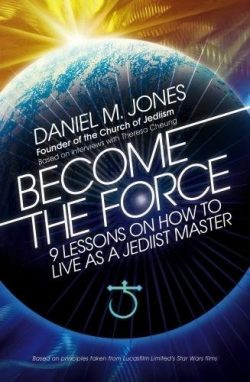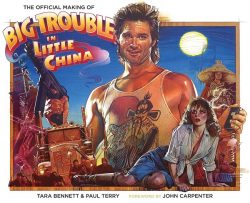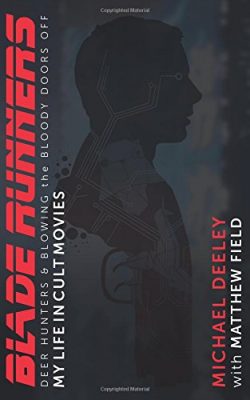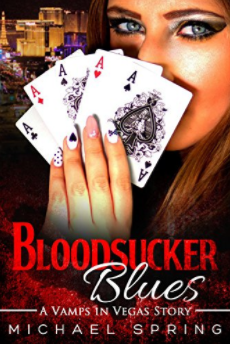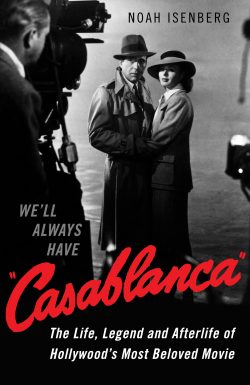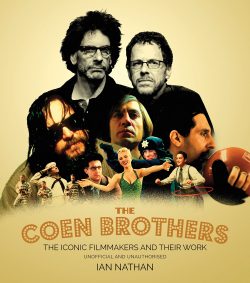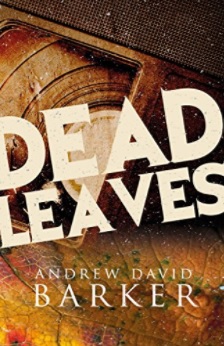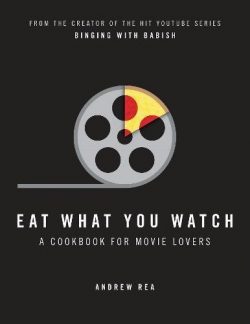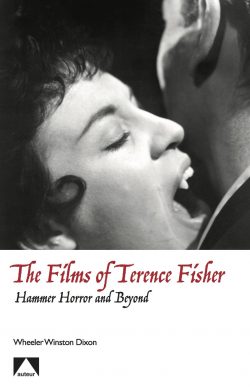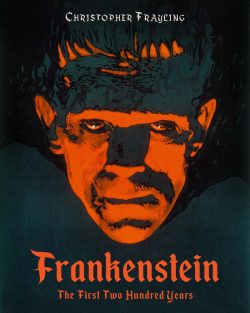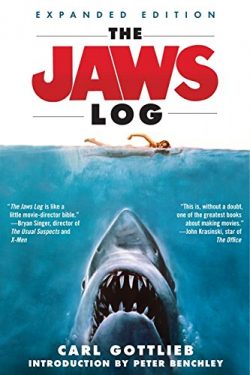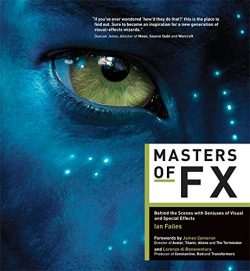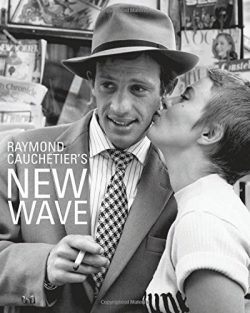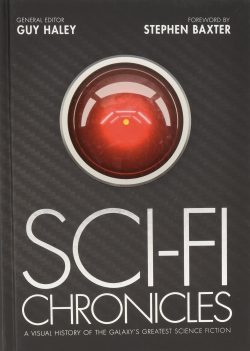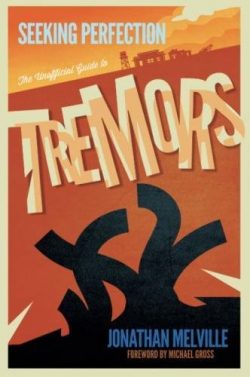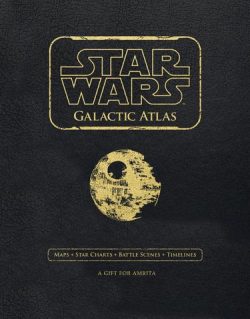2017 Christmas Gift Guide: Books
Christmas is heading our way and what do you get for the movie fan in your life. Well, you could get them a load of Blu-rays and DVDs, but you how about getting them a movie related book or two?
Here are some recommendations for books that I think you may like.
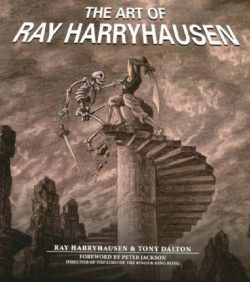 The Art of Ray Harryhausen – by Ray Harryhausen and Tony Dalton
The Art of Ray Harryhausen – by Ray Harryhausen and Tony Dalton
Ray Harryhausen is one of the greats and the creatures he created are part of my childhood. The skeleton scenes in Jason and the Argonauts is just superb. This book has so much detail about the work it is a little overwhelming, but well worth reading.
In An Animated Life (Aurum, 2003) Ray Harryhausen told the story of his career as the acknowledged grandmaster of special effects in the pre-computer era, the creator of classics such as One Million Years BC, Jason and the Argonauts and Clash of Titans.
In this book the focus is not on the movies themselves, but on the vast hoard of artwork which Harryhausen has carefully preserved in his London home. These include preliminary sketches, elaborate drawings of key scenes and carefully plotted storyboards, all produced as he sought backing for his next venture and prepared to undertake the laborious task of animating the prehistoric creatures, aliens and mythical monsters which stole scene after scene from the human actors. There are also the tiny, elaborately articulated models which Harryhausen created to play these roles and the bronzes which he cast to preserve their forms in perpetuity.
This stunning array of images is a tribute to the scope of Harryhausen’ s imagination and his artistic skills which no student of special effects or cinema history will want to be without.
 Become the Force: 9 Lessons on How to Live as a Jediist Master – by Daniel M Jones and Theresa Cheung
Become the Force: 9 Lessons on How to Live as a Jediist Master – by Daniel M Jones and Theresa Cheung
Okay, it’s a self-help book, but it uses Star Wars and Jedis so what’s not to love?
Within each and every one of us pulses the universal life energy, and this energy connects us all. It empowers us and it allows us to know that we are in control of our lives. It is light and dark, good and bad.
IT IS THE FORCE.
Now, more than ever, it is our responsibility to overcome the Dark Side.
Daniel M. Jones founded the Church of Jediism in 2007 following the Jedi census phenomenon of 2001. Today, the Church offers courses on Jediism from many masters featured in this book as well as Daniel himself, and membership is at an all-time high as people search for a new perspective. This book tells Daniel’s story.
In it he outlines the philosophy of Jediism and provides practical tools for anyone interested in gaining a deeper understanding of how to use the Force in everyday life.
 The Official Making of Big Trouble in Little China – by Tara Bennett and Paul Terry.
The Official Making of Big Trouble in Little China – by Tara Bennett and Paul Terry.
John Carpenter’s film is a classic and so much fun. This book is packed full of stories from behind the scenes along with some beautiful photos.
• We’ve shaken the pillars of Heaven and paid our dues to put together the only official, comprehensive behind-the-scenes look into the making of the 1986 cult classic film “Big Trouble in Little China.”
• To commemorate the film’s 30th anniversary, we’ve assembled a wealth of never-before-seen material and interviewed some of the key players for a detailed look behind the camera at the unique characters, colorful sets, crazy props, and much, much more.
• Features a foreword by “Big Trouble in Little China” director John Carpenter, and an afterword by the film’s star, Kurt Russell.
 Blade Runners, Deer Hunters & Blowing the Bloody Doors Off – by Michael Deeley with Matthew Field
Blade Runners, Deer Hunters & Blowing the Bloody Doors Off – by Michael Deeley with Matthew Field
A brilliant look behind the scenes at some very iconic movies.
In this fully revised edition, Deeley reveals his life working to produce iconic cult films including Blade Runner, The Deer Hunter, The Italian Job and Don’t Look Now.
Few would imagine that one man links Ridley Scott’s visionary sci-fi classic Blade Runner; The Deer Hunter, that searing study of lives ruined by the Vietnam War; and The Italian Job, the much loved British caper that made an icon of Michael Caine. But Michael Deeley has worked with some of the toughest film-makers, and lived to tell the tale, in this frank and humorous rollercoaster-ride through the ways and wiles of getting great movies made.
Oscar-winning producer, Michael Deeley, an urbane Englishman in Hollywood, had to fight wars to get these movies made, from defending the legendary sex scene in Don’t Look Now from a disapproving Warren Beatty to seizing control of Convoy from a cocaine-ridden Sam Peckinpah.
This is a no-holds barred look at the true stories behind some of the greatest cult movies ever made.
An essential for any fan of cult film, Britich cinema, or simply of a fascinating story told well.
 Bloodsucker Blues: A Vamps in Vegas Story – by Mike Spring
Bloodsucker Blues: A Vamps in Vegas Story – by Mike Spring
Okay, it is not really movie related, but it is written by my friend and After the Ending podcast co-host so it makes the list. It is also lots of fun.
“Everything you know about vampires is wrong.”
Meet Alex. He’s a vampire with a serial case of sarcasm living in Las Vegas, a city with a surprisingly large population of bloodsuckers. When Alex crosses paths with a vicious crime boss who has a personal vendetta and a desire to become a vampire, Alex finds himself in the kind of trouble he can usually con his way out of. Can his fast talking ways help him (literally) keep his head?
Explore the world of Vamps in Vegas in this Amazon Top 10 bestselling book that’s been called “Interview With the Vampire meets The Office!”
As for the podcast you can listen to that on SoundCloud, iTunes, Sticher and Tunein.
 We’ll Always Have “Casablanca” – by Noah Isenberg
We’ll Always Have “Casablanca” – by Noah Isenberg
The story of how Casablanca was made and how it became the most beloved of Hollywood movies.
Casablanca is ‘not one movie’, Umberto Eco once quipped, ‘it is “movies”’. Released in 1942, the film won four Oscars, including Best Picture, and featured unforgettable performances by Humphrey Bogart and Ingrid Bergman.
We’ll Always Have Casablanca offers a rich account of the film’s origins, the myths and realities behind its production, and the reasons it remains so revered today. Through extensive research and interviews with film-makers, Noah Isenberg explores the ways in which the film continues to dazzle audiences and saturate popular culture seventy-five years after its release.
 The Coen Brothers – by Ian Nathan
The Coen Brothers – by Ian Nathan
The Coen brothers have a reputation as two of the most interesting, distinctive, and creative filmmakers. Their films cross many genres and styles and yet all are recognisably their own. Through in-depth and informative text written by film journalist Ian Nathan, The Coen Brothers reexamines the brothers’ most famous works including Raising Arizona, Fargo, The Big Lebowski, O Brother, Where Art Thou? No Country for Old Men and True Grit as well as some of their cult films such as The Evil Dead, Paris je t’aime and A Serious Man.
Packed with stunning images from the Kobal archives, the book also highlights their surprising involvement in recent films like Bridge of Spies and Unbroken as well as looking at other producers that they frequently collaborate with.
 Dead Leaves – by Andrew David Barker
Dead Leaves – by Andrew David Barker
A superb novel about some kids trying to get hold of a video nasty back in the day when some films were banned and were also on videos!
To Scott, Paul and Mark, horror films are everything.
The year is 1983, the boom of the video age, and Scott Bradley is seventeen, unemployed and on the dole. Drifting through life, he and his friends love nothing more than to sit around drinking, talking about girls, and watching horror movies.
But things are about to change.As the ‘video nasty’ media storm descends, their desire to find a copy of the ultimate horror film – The Evil Dead – is going to lead them to the most significant days of their young lives. As the law tightens and their way of life comes under threat from all quarters, they come to learn what truly matters to them.
A heartfelt story of friendship, loyalty and youthful rebellion, Dead Leaves is a darkly funny and brutally honest depiction of aimless life in a Midland town, and perfectly captures the impact those first few years of video had on a generation.
 Eat What You Watch: A Cookbook for Movie Lovers – by Andrew Rea
Eat What You Watch: A Cookbook for Movie Lovers – by Andrew Rea
I have recently got into watching the Binging With Babish YouTube channel, which sees him recreate many of the various meals seen on film and TV. Now he has got a cookbook out and it makes me want to do movie nights with the right meal for the film.
Many of our favourite movies come with a side of iconic food moments: the comforting frothy butterbeer from Harry Potter, the sumptuous apple strudel from Inglorious Basterds, the delectable deli fare from When Harry Met Sally, or Remy the rat-chef’s signature ratatouille in Ratatouille.
In this cookbook, author Andrew Rea (of the hit YouTube channel ‘Binging with Babish’) recreates these iconic food scenes and many more. With recipes from more than 40 classic and cult films, Eat What You Watch is the perfect gift for both movie buffs and cooks who want to add some cinematic flair to their cooking repertoire.
 The Films of Terence Fisher: Hammer Horror and Beyond – Wheeler Winston Dixon
The Films of Terence Fisher: Hammer Horror and Beyond – Wheeler Winston Dixon
A supremely well-written book that is a pleasure to read and takes us through the world of Hammer Horror.
Tracing the entire career of the British director Terence Fisher, best known for his Gothic horror films for Hammer―such as The Curse of Frankenstein (1957) and Dracula (1958)―The Films of Terence Fisher covers not only his horror films, but also his film noirs, comedies,and early apprenticeship work to create a full picture of Fisher’s life and work.
Based on the work Dixon did in his groundbreaking study The Charm of Evil, this is an entirely revised and rewritten work with new research, new details, and fresh critical insights.
Brimming with rare stills, interviews, and detailed analysis of Fisher’s films―both for Hammer as well as his earlier work―this is the ultimate”one-stop” book on Terence Fisher, both in his horror films, and his entire body of work, as well as his legacy to the British cinema.
 Frankenstein: The First Two Hundred Years – by Christopher Frayling
Frankenstein: The First Two Hundred Years – by Christopher Frayling
Does exactly what you would expect and then some. 200 years of Frankenstein and it is amazing to see just what a lasting impact Mary Shelley’s creation has had.
On New Year’s Day 1818, Mary Shelley’s novel Frankenstein was first published in an anonymous three-volume edition of 500 copies. Some thought the book was too radical in implication. A few found the central theme intriguing… no-one predicted its success.
Since then, there have been many, many adaptations – 120 films alone, at the last count – on screen, stage, in novels, comics and graphic novels, in advertisements and even on cereal packets. From a Regency nightmare, Frankenstein became a cuddly childhood companion – thoroughly munstered, so to speak. The story has been interpreted as a feminist allegory of birthing, an ecological reading of mother earth, an attack on masculinist science, the origin of science fiction, an example of ‘female gothic’, a reaction to the rise of the industrial proletariat… and much else besides.Frankenstein lives! The ‘F’ word has been applied, since the 1950s, to test-tube babies, heart transplants, prosthetics, robotics, cosmetic surgery, genetic engineering, genetically-modified crops, and numerous other public anxieties arising from scientific research. Today, Frankenstein has taken over from Adam and Eve as the creation myth for the age of genetic engineering… This book, celebrating the two hundredth birthday of Frankenstein, will trace, in colourful and engaging ways, the journey of Shelley’s Frankenstein from limited edition literature – to the bloodstream of contemporary culture. It includes new research on the novel’s origins, and a facsimile reprint of the earliest-known manuscript version of the creation scene; visual material on adaptations for the stage, in magazines, on playbills, in prints and in book publications of the nineteenth century; series of visual essays on many of the film versions – and their inspirations in the history of art; and Frankenstein in popular culture – on posters, advertisements, packaging, in comics and graphic novels.
 The Jaws Log – by Carl Gottlieb
The Jaws Log – by Carl Gottlieb
Jaws is one of my all-time favourite films and this book takes you through the making of the film. It is full of great anecdotes and details. A must-have for any Jaws fan.
Winner of three Oscars and the highest-grossing film of its time, Jaws was a phenomenon, and this is the only book on how twenty-six-year-old Steven Spielberg transformed Peter Benchley’s number-one bestselling novel into the classic film it became.
Hired by Spielberg as a screenwriter to work with him on the set while the movie was being made, Carl Gottlieb, an actor and writer, was there throughout the production that starred Roy Scheider, Robert Shaw, and Richard Dreyfuss. After filming was over, with Spielberg’s cooperation, Gottlieb chronicled the extraordinary yearlong adventure in The Jaws Log, which was first published in 1975 and has sold more than two million copies. This expanded edition includes a photo section, an introduction by Benchley, and an afterword by Gottlieb that gives updates about the people and events involved in the film, ultimately providing a singular portrait of a famous movie and inspired moviemaking.
 Labyrinth: The Ultimate Visual History – by Block and Erdman
Labyrinth: The Ultimate Visual History – by Block and Erdman
If you love Labyrinth then you will love this. Cool photos, stories and some amazing art work.
“Labyrinth: The Ultimate Visual History” is the definitive thirtieth-anniversary exploration of the beloved Jim Henson classic, featuring rare artwork, interviews, and on-set photos. Three decades after its release, “Labyrinth,” starring Jennifer Connelly and David Bowie, continues to enthrall audiences with its winning mixture of fairy tale whimsy, fantastical creatures, and unforgettable music. Filled with a wealth of rare and unseen behind-the-scenes imagery, “Labyrinth: The Ultimate Visual History” explores the creation of the film as seen through the eyes of the artists, costume designers, and creature creators who gave the beloved fantasy classic its distinctive look. Featuring in-depth interviews with the talented crew and cast, this deluxe book brings together a wealth of rare sketches and concept art with numerous insert items, such as story notes from Jim Henson, sketches from character designer Brian Froud, and many more treats for fans of the film. With stunning visuals and unparalleled insight into the creation of a true modern classic, “Labyrinth: The Ultimate Visual History “is the perfect companion piece to one of the best-loved fantasy films of all time.”
 The Lambshank Redemption Cookbook – by Lachlan Hayman
The Lambshank Redemption Cookbook – by Lachlan Hayman
The recipes may not be directly related the films the riff off, but I did chuckle at some of the puns.
Lights, Korma, Action! Get stuck into these 50 movie-inspired recipes that are worthy of an Oscar.
Why settle for popcorn and a soft drink? The Lambshank Redemption Cookbook presents a director’s cut of the finest dishes paying homage to the finest ever films. Think of them as culinary sequels.
With 50 blockbuster pun-based recipes featuring The Silence of the Clams, Frying Nemo, Peel Harbor, The Hummus Crown Affair, Pinenuts of the Caribbean, Cook-a-Dahl Dundee,
and The Gnocchi Horror Show, this is five-star cuisine from the big screen.
 Masters of FX – by Ian Failes
Masters of FX – by Ian Failes
It would be rare these days to find a film that did not in some way depend on the magic of special and visual effects – from the raging computer-generated dinosaurs in Steven Spielberg’s Jurassic Park, to the fantasical worlds of Tim Burton’s Alice in Wonderland, and the photoreal tiger and ocean in Ang Lee’s Life of Pi. Through interviews with 16 of the leading FX pioneers from around the world, author Ian Failes explores the making of some of the most memorable film sequences ever produced, showcasing the shift from practical to digital magic with original behind-the-scenes imagery, shot breakdowns, and detailed explanations of some of the secrets behind the making of cinema’s most extraordinary creations.
 Raymond Cauchetier’s New Wave – by Raymond Cauchetier
Raymond Cauchetier’s New Wave – by Raymond Cauchetier
Featuring arguably the greatest images of the French New Wave cinema; many images have never been seen before. First ever monograph in English devoted to the film photography of Raymond Cauchetier.
In the late 1950s and early 1960s French New Wave cinema exploded onto international screens with films like Les quatre cents coups, A bout de souffle and Jules et Jim. They were radical, artistic, original and most importantly set up the director as a creative genius; at the forefront were Francois Truffaut and Jean-Luc Godard. Today these films are credited with changing cinema forever. For many film goers they command strong and passionate respect and became the foundations on which a lifetime of cinema-going is built.
In the photographs of Raymond Cauchetier we bear witness to the great artistic genius that was central to the process of making these films. Cauchetier’s photographs are a culturally important documentary of the director at work, his methods and processes. His photographs capture some of the most memorable moments in film; Jean-Paul Belmondo and Jean Seberg on the Champs Élysées in A bout de souffle, Jeanne Moreau in the race scene of Jules et Jim, Anna Karina in a Parisian Cafe in Une femme est une femme.
But Cauchetier’s genius lies also in the fact that his photographs are far above just a visual record of these films. They clearly show the same spirit, the same freedom and the same originality that made The New Wave so important. Cauchetier’s photographs are as much a part of The New Wave as the films themselves. In the words of Richard Brody: In these images, Raymond Cauchetier, a witness to art, made art by bearing true witness.
This is the first book published in English featuring the New Wave film photographs of Raymond Cauchetier.
 Sci-Fi Chronicles – Edited by Guy Haley
Sci-Fi Chronicles – Edited by Guy Haley
The ultimate guide to the infinite variety of the science fiction multiverse.
What links Stingray to Space: 1999? Which superstar director had a hand in *batteries not included? Who was Pierre Boulle and how did he spawn one of Hollywood’s greatest franchises? All the answers, and much more, are revealed in Sci-Fi Chronicles.
From Barbarella to Blade Runner, this comprehensive guide to science fiction explores the creation and evolution of the genre’s greatest creations, detailing their complex real-world and in-world development through an arresting blend of incisive commentary and stunning archive imagery.
Arranged alphabetically, each entry examines the myriad expressions of a much-loved sci-fi title — from book to movie to television series, and beyond. Expert writers offer entertaining overviews, and colour-coded infographic timelines provide an at-a-glance guide to landmark publication, release and broadcast dates.
For key franchises — such as Doctor Who and The War of the Worlds — lavish photo-spreads reveal how they have evolved from their black-and-white beginnings to today’s big-budget blockbusters. And seminal, genre-defining sagas, like Star Wars and Star Trek, are accompanied by fascinating chronologies of how each work fits into the series’ fictional universe.
International in scope and encylopedic in scale, Sci-Fi Chronicles is an essential work for any true science fiction fan.
 Seeking Perfection: The Unofficial Guide to Tremors – by Johnathan Melville
Seeking Perfection: The Unofficial Guide to Tremors – by Johnathan Melville
Welcome to Perfection, Nevada
A throwback to the kind of sci-fi B movies that had long gone out of fashion, Tremors was a box office flop that became a home video phenomenon, spawning multiple sequels and a short-lived TV series.
Seeking Perfection: The Unofficial Guide to Tremors is the first book to go beneath the surface of the Tremors franchise, featuring new interviews with more than 50 cast and crew members, including stars Kevin Bacon and Michael Gross, director Ron Underwood, executive producer Gale Anne Hurd, and the monster makers who brought the Graboids to life.
Seeking Perfection also includes:
Interviews with cast and crew from Tremors 1-5 and the TV series
Newly-discovered photos from the Tremors set
Storyboard excerpts
Commentary on every episode of the TV series
Exclusive coverage of the special 25th anniversary Tremors screening in Los Angeles
A look at the 10-year journey from script to screen of the latest sequel, 2015’s Tremors 5: Bloodlines
Seeking Perfection is the ultimate, 100% unofficial, reference guide to Tremors!
 Star Wars Galactic Atlas – Illustrated by Tim McDonagh
Star Wars Galactic Atlas – Illustrated by Tim McDonagh
Covering the Star Wars universe, the Star Wars Galactic Atlas is filled with double-page spreads illustrating the galaxies and planets referenced from the film franchise. Including multiple TV shows and canon literature, this book is presented in a FREE gift box and will become the ultimate keepsake for a true Star Wars fanatic.
As for the book itself, the pages are purposefully tarnished and withered to create the illusion the edition has come from “A long time ago, in a galaxy far, far away”. Encased in a black leatherette, the book allows the recipient’s Name to be embossed on the cover, adding to the uniqueness of the edition.
Complementing its sheer size and matte leatherette colour, the Personalised Star Wars Gift Book gives fans the most comprehensive overview of cartographic worlds, including specific regions within the galaxy. Particular note-worthy worlds from the film franchise such as The Force Awakens and Rogue One, as well as the reputable television shows, The Star Wars Rebels and The Clone Wars are illustrated in the edition.
You can get a personalised copy here

